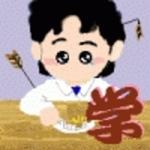@Sekko  Sekko schrieb:da scheinst DU deine hausaufgaben nicht gemacht zu haben
Sekko schrieb:da scheinst DU deine hausaufgaben nicht gemacht zu haben
Ist es etwa meine Schuld, daß dein Textverständnis immer nur für einen Satz ausreicht? Lies einfach weiter:
Das ist sicher fundierter als die Meinung des hochgradig verwirrten Repto-Icke.
Zur besseren Illustration noch was von der Scheibenwelt:
The Opies later collected, and began to explain to adults, the original nursery stories like Cinderella and Rumpelstiltskin. In late medieval times, Cinderella's slipper had been a fur one, not glass. And that was a euphemism, because (at least in the German verison) the girls gave the prince their "fur slipper" to try on... The story came to us through the French, and in that language "verre" can be either "glass" or "fur". The Grimm brothers went for the hygienic alternative, saving parents the danger of embarrassing explanations.
Rumpelstiltskin was an interestingly sexual parable, too, a tale to programme the idea that female masturbation leads to sterility. Remember the tale? The miller's daughter, put in the barn to "spin straw into gold", virginally sits on a little stick that becomes a little man... The denouement has the little man, when his name is finally identified, jumping in to "plug" the lady very intimately, and the assembled soldiers can't pull him out. In the modern bowdlerized version, this survives vestigially as the little man pushing his foot through the floor and not being able to pull it out, a total non sequitur. So none of those concerned, king, miller or queen, can procreate (the stolen first child has been killed by the soldiers) and it all ends in tears. If you doubt this interpretation, enjoy the indirection: "What is his name? What is his name?" recurs in the story. What is his name? What is a stilt with a rumpled skin? Whoops.
Terry Pratchett, Ian Stewart and Jack Cohen: The Science of Discworld II: The Globe
http://www.idlethink.com/archives/2003/08/innocence.php (Archiv-Version vom 06.01.2009)







